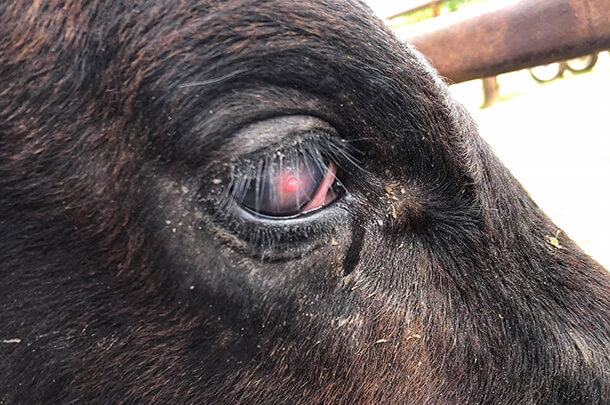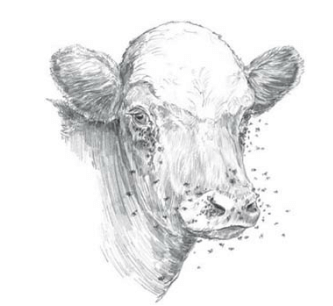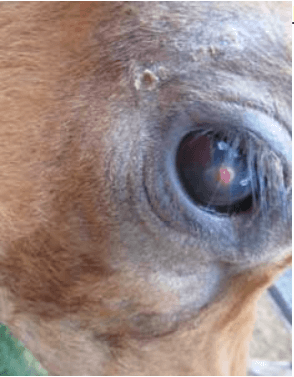
Cattle are susceptible to various eye diseases due to injuries or the introduction of pathogens. Prompt treatment of eye injuries or diseases in cattle is essential to prevent blindness. One common eye disease in cattle is Pinkeye.
Pinkeye in cattle can cause losses for farmers due to weight reduction, treatment costs, and decreased cattle value resulting from damaged or blind eyes. If an animal contracts this disease, immediate treatment of the affected animal is recommended, and preventive measures should be taken to protect other cattle from infection. Pinkeye is caused by the bacterium Moraxella bovis, which typically damages the cornea of the cattle's eye. Factors like dust, flies, viruses, or foreign objects that irritate the eye make it easier for this bacterium to attack. Face flies are known carriers and spreaders of pinkeye within cattle populations, especially in warm weather. The pinkeye bacteria enter the eye through the cornea's wounds created by these face flies. These flies harm the cattle's eye to induce tear production, allowing them to consume the protein-rich eye fluid.
Stages of pinkeye progression:
- After irritation, the cattle's eye becomes watery, and they squint more frequently while being sensitive to light. One or two days later, small white spots appear on the cornea of the eye.
- The condition worsens as the white spots grow larger and cause abrasions.
- Deeper and larger abrasions on the eye lead to a protruding cornea due to pus accumulation.
- The eye may rupture due to severe infection or blind animals colliding with objects.
- Pinkeye cases often leave corneal scars, resulting in partial or complete blindness in infected cattle.
- A diseased eye may heal after a few weeks, leaving scars, but severe cases, if left untreated, can result in permanent eye damage.
Early-stage pinkeye should be promptly treated as it responds well to treatment. Treatment options include using antibiotics to fight infection, shielding the eye from direct sunlight, dust, flies, or other irritants during the healing process. Topical treatments (applied directly to the eye) like ointments, eye drops, or sprays should be administered twice daily for effectiveness, as they tend to be washed away by tears.
If you find cattle affected by pinkeye, it's essential to pay extra attention to cleanliness in the barn to minimize face flies that disturb the animals. Fly repellents can be used, and occasional spraying around the barn area can help deter face flies. This way, the spread of the disease to other cattle can be avoided.


References:
H.S. Thomas and B. Black; 2009; Storey’s Guide to Raising Beef Cattle; Storey Publishing; Versa Press; United States
Image source : https://www.motherearthnews.com/homesteading-and-livestock/pink-eye-cattle-zbcz1308
H.S Thomas; 2009; The cattle health handbook; Storey Publishing; Versa Press; United States
SHARE



